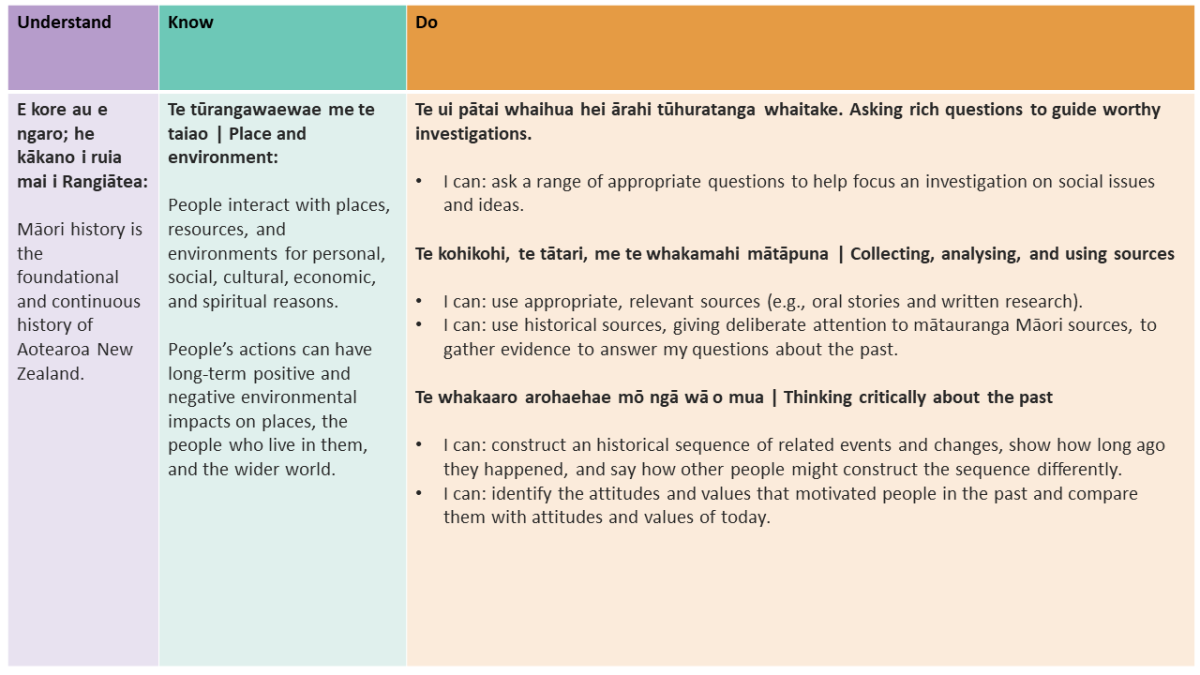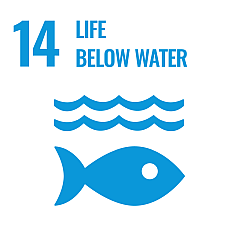<- Pakake New Zealand sea lions field trip homepage
Curriculum highlights
This virtual field trip, aligns with Te Mātaiaho, the refreshed New Zealand Curriculum. It is designed to integrate key learning areas and priorities by offering a rich educational experience for ākonga in taoka/taonga species, conservation, social sciences, and science.
Curriculum flexibility
Our field trips are cross-curricular learning experiences that can be adapted to different learning areas and progressions. You can develop your teaching approach to suit ākonga interests and needs.
Te ao tangata | Social sciences
Explore the social impacts and influences of conservation efforts for taoka/taonga species, highlighting the roles of organisations such as government agencies, local iwi, and community groups in land use and management. Encourage ākonga to dig deeper into the social and cultural aspects of kaitiakianga | environmental stewardship.
Example: This virtual field trip supports progress outcomes in Phase 2 (Years 4-6) of Te ao tangata | social sciences, defined by the Understand, Know, Do (UKD) framework.

Te ao Tūroa | Science
This field trip focuses on the Living World strand, learning about ecosystem diversity and the impact of human activities on other species, including the significance of conservation.
The trip also supports the Nature of Science strand. Ākonga learn about the principles of scientific inquiry, the evolving nature of scientific knowledge, and the social value of science.
This field trip is aimed at years 4-8 (level 3) of the science learning area:
- Ecology: Explain how living things are suited to their particular habitat and how they respond to environmental changes, both natural and human-induced.
- Participating and contributing: Explore various aspects of an issue and make decisions about possible actions.
NELP Priorities
This field trip aligns with National Education Learning Priorities (NELP) by promoting learner-centred education and equitable access to knowledge. It enhances cultural diversity, fosters active learning, emphasises environmental sustainability, encourages community engagement, and develops cultural competence. It exemplifies NELP's holistic approach to education, encompassing these key priorities.
Sustainable Development Goals (SDGs) UNESCO Educator Resources
The UNESCO Resources for Educators - Life Below Water (Goal 14) offers a range of educational materials and tools designed to enhance ocean awareness and sustainable resource exploitation.
Reflective teacher questions
Use the following reflective questions to guide your teaching practice:
- How can I best support my ākonga in understanding the significance of the New Zealand pakake in our marine ecosystems and their cultural importance to Ngāi Tahu?
- What strategies can I use to encourage critical thinking, problem-solving, and effective communication about the challenges faced by pakake and the efforts to recover their population?
- How can I foster an inquiry-based approach that empowers ākonga to investigate historical and ecological significance of taonga species and their connection to the local community and iwi?
- How can I facilitate ākonga-led exploration to deepen their understanding of the role they can play in the conservation efforts and the importance of preserving taonga species like the New Zealand pakake in our marine ecosystems?
A suggested teaching and learning framework
The following approach supports learning progressions in social sciences, aligns with the Understand, Know, Do (UKD) framework of Te Mātaiaho, and reflects the current science curriculum learning objectives by supporting critical thinking, independent inquiry, and collaborative investigation.
1. Introduce and explore
Begin by introducing the field trip objective, emphasising the importance of New Zealand pakake as taoka species and the crucial conservation efforts dedicated to their preservation.
![]() Evaluate prior learning
Evaluate prior learning
Use the pre-trip survey (downloadable Word document) to assess ākonga understanding about concepts around pakake, taoka/taonga species, marine ecosystems, and conservation to stimulate interest in the trip. Copy and paste the questions and answers into an interactive platform like Kahoot!, Google Forms, or Quizlet for this activity.
Explore the profound cultural significance of pakake as a taoka species to Ngāi Tahu and delve into their distinctive habitats and ongoing conservation efforts that ensure their sustainability.
Ākonga can use Videos - Play & think (downloadable PDF) to take notes while watching the videos to help them remember key points and examples. Facilitate a group discussion to share findings and discuss the impact of the video on their understanding.
2. Extend learning
Involve ākonga in activities that stimulate discussions and foster deeper comprehension of key aspects which are explored during the pakake field trip, including the concept of a taoka/taonga species, marine ecosystems and ongoing conservation endeavours, with support from the resource Field trip activities.
![]() Evaluate ākonga learning
Evaluate ākonga learning
Assess readiness and stimulate thinking about conservation-based, ākonga-led inquiry.
- Use the post-trip survey (downloadable Word document) to gauge the depth and progress of ākonga learning concerning pakake, marine diversity, the significance of taoka/taonga species and conservation.
- Use this Solo taxonomy rubric (downloadable Word document) to assess ākonga understanding of marine ecosystems, taoka/taonga species and conservation.
3. Enable ākonga-led inquiry
Empower ākonga to independently or collaboratively research and potentially contribute to conservation initiatives with a specific emphasis on protecting taoka/taonga species in Aotearoa.
Encourage ākonga to generate open-ended questions or challenges related to local biodiversity, conservation and the preservation of taoka/taonga species, taking into account cultural and social factors. For example:
- Biodiversity: Why is biodiversity important in an ecosystem? How does biodiversity contribute to the strength and balance of the environment?
- Conservation: What proactive measures can be taken to ensure the long-term survival of endangered taoka/taonga species in their natural habitats?
- Ecosystems: How do changes in one part of an ecosystem impact the entire ecosystem, especially concerning taoka/taonga species?
- Historical: What significant historical events or actions have influenced the biodiversity and conservation efforts of specific taoka/taonga species?
- Cultural: What cultural values, beliefs, pūrakau, and practices of local iwi emphasise the significance of taoka/taonga species and guide their conservation efforts?
- Social: How can tamariki help protect the environment and taoka/taonga species?
Encourage ākonga to explore topics, find information, connect with experts, and gather data for inquiries related to a taoka/taonga species, sustainability, and conservation.
4. Present and share
Assist ākonga to present and share their learning. This can include, digital storytelling, websites, podcasts, exhibitions, video, community engagement, news stories, artwork.
![]() Evaluate ākonga learning
Evaluate ākonga learning
Assess ākonga-led inquiry, critical thinking and problem solving using this Solo taxonomy rubric (downloadable Word document) as a guide.
5. Reflect
Encourage ākonga to reflect on what they've learned about the sustainability and conservation of taoka/taonga species. How has their understanding of species and conservation efforts changed? What does this mean for their decisions and actions?
Links
- Taonga Species Series
NIWA presents articles and resources related to culturally significant species in Aotearoa. - Marine ecosystem
A Science Learning Hub interactive resource. - New Zealand's marine biodiversity
The Department of Conservation’s (DOC) page about New Zealand’s marine biodiversity. - New Zealand sea lion / pakake / whakahao
DOC outlines how New Zealand sea lions are one of the rarest sea lion species in the world and are only found in New Zealand. - Māori and New Zealand sea lion
DOC presents how Ngāi Tahu will be active in achieving the vision of the threat management plan for the New Zealand sea lion, a taonga species. - The sea lions next door
New Zealand Geographic article about how sea lions are coming home to the coasts of southern New Zealand, returning to their former territory after more than 300 years in exile. - Story: Seals
From Te Ara: Encyclopedia of New Zealand. - Back from the Brink – Sheltering New Zealand’s Endangered Pakake
Auckland Zoo Wildlife Conservation work captured in text, images and video. - Ngāi Tahu – Environmental Kaitiakitanga
The Ngāi Tahu vision for a principled kaitiaki of their takiwā. - Ministry for the Environment – educational resources
Educational resources to help ākonga, teachers and communities contribute to the future wellbeing of the environment. - The New Zealand Sea Lion Trust
Founded in 2003, The New Zealand Sea Lion Trust was established to provide protection to and education about this critically endangered marine mammal species.




